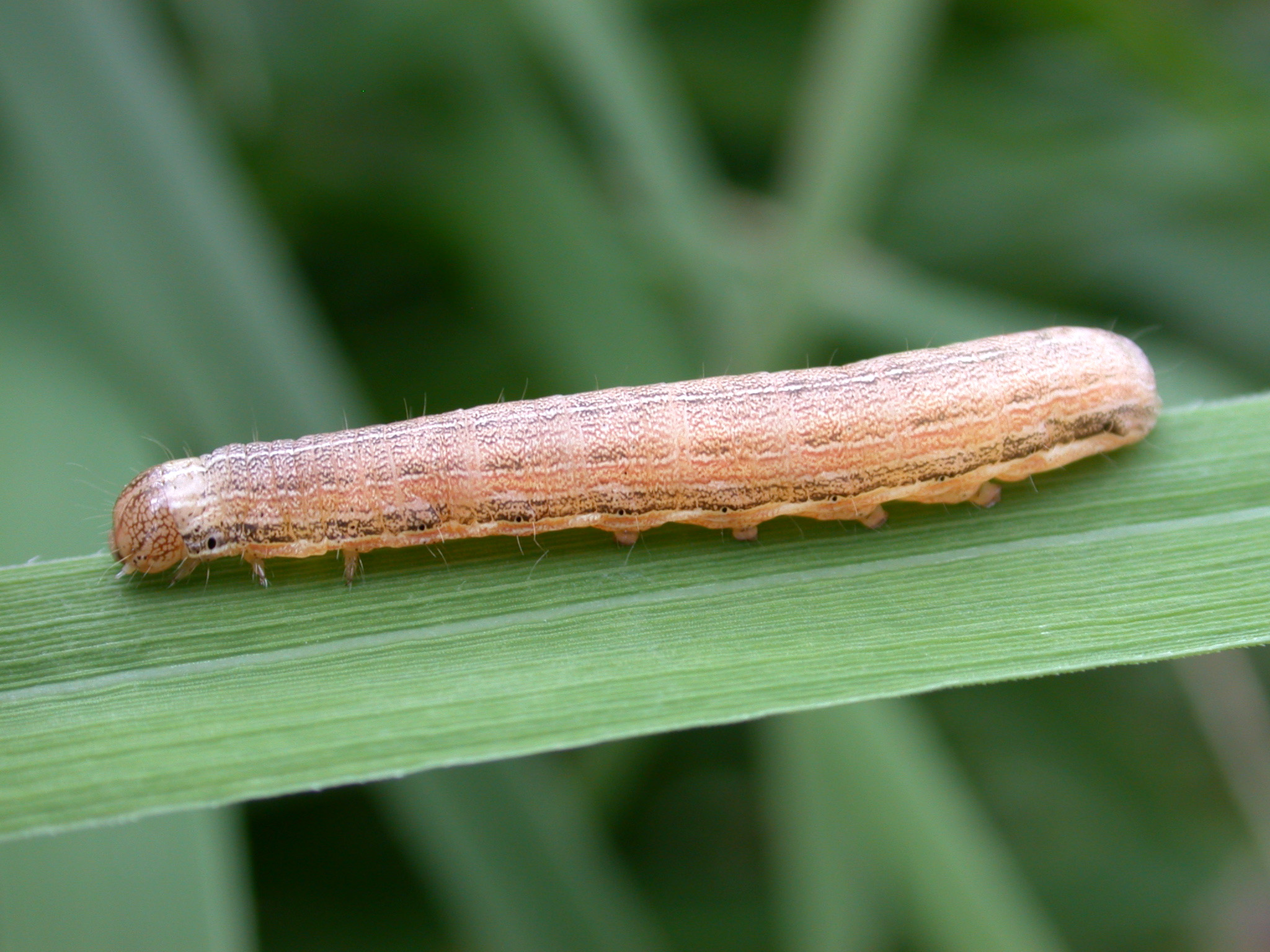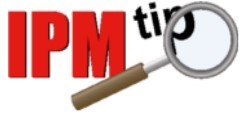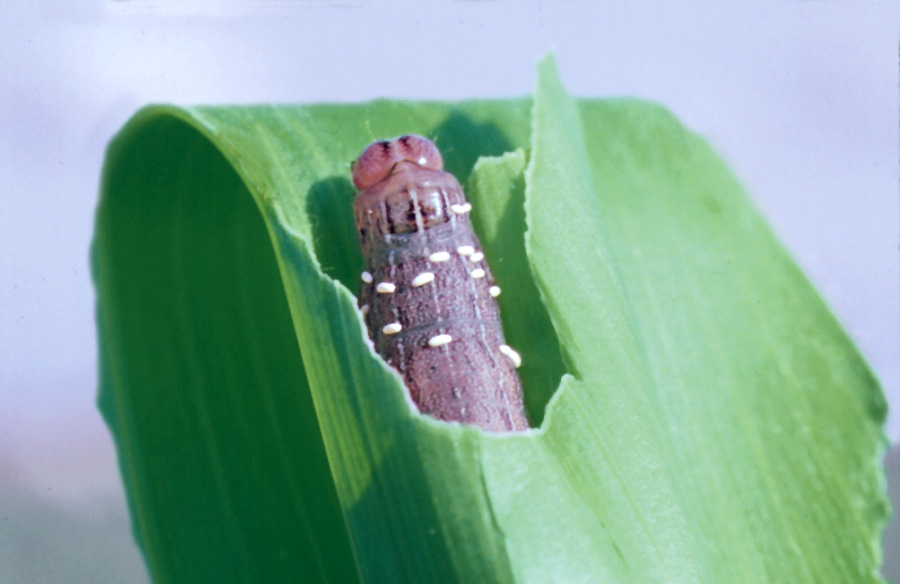Armyworms (Forage)
Pseudaletia unipuncta Haworth
Search the Pest & Crop Newsletter

The ability to see these full-sized life-cycle images is currently disabled to resolve an issue.
Related Video Resources:
Appearance and Life History

Photo by J. Obermeyer
Armyworm can be a pest of forages in the spring. Greatest armyworm damage occurs when the flag leaves are destroyed or heads are clipped off.
The adult armyworm is a pale brown moth with a white dot in the center of each forewing. Female moths fly into forages with dense vegetation to lay their eggs on seedling plants.
The newly hatched larva is pale green and moves about in a looping motion. The full-grown larva is about 1-1/2 inches (38 mm) long and is dull-green to brown in color with alternating light and dark stripes running the length of its body. Pale orange and brown stripes are visible along the sides of its body. Armyworms usually feed at night or during cloudy days, often hiding beneath crop debris at other times.
Damage

Photo by Purdue University
Larvae feed on leaves of forage. They feed on flag-leaves, awns, and tender kernels and may cut completely through stems just below the heads.
Sampling Method
- Armyworm feed primarily at night or during cloudy days, consider this when planning scouting activities and check fields early in the morning, in the evening, or during overcast days. If sampling during sunny days, look through crop debris around the base of plants.
- If armyworm damage is found during regular field visits, first check field margins and any areas where lodged plants are present in order to determine if the infestation is limited to a particular part of the field before sampling.
Sampling:
- Check 2 spots in each of 5 areas of the field for larvae.
- At each location, shake the plants in approximately 1 linear foot (30 cm) of row to dislodge larvae that might be feeding on the lower leaves.
- Count the number of larvae on the ground and in plant debris along the row.
- Estimate the size of the larvae and the percentage of plants damaged within each sampling area.
- Note the stage of development of the plants.
Management Guidelines
Forage Insect Control Recommendations: E-series 220-W (PDF)
- Control may be advisable if 5 or more larvae per linear foot (30 cm) of row are present and the larvae are less than 1-1/4 inches (31 mm) long and not parasitized, or if grain heads are being clipped off.
- If the infestation is limited to certain areas of the field, spot treat the infested areas if the larval population and damage level warrants control.
- If the grain is nearing maturity and there is no evidence of head clipping, treatment is not recommended.


Photo by J. Obermeyer
Before treating, inspect larvae for the presence of small white “egg-shaped” structures, usually just behind the head. These are the eggs of a parasitic fly and indicate that parasitized larvae will soon stop feeding and eventually die.
